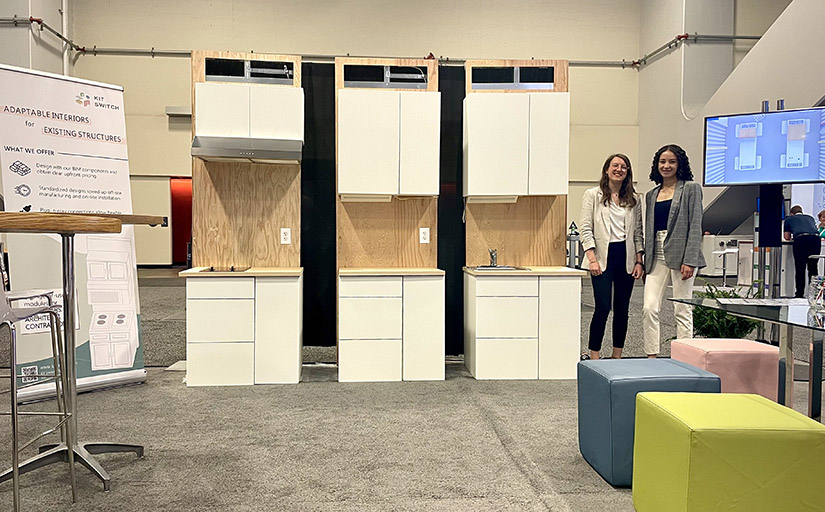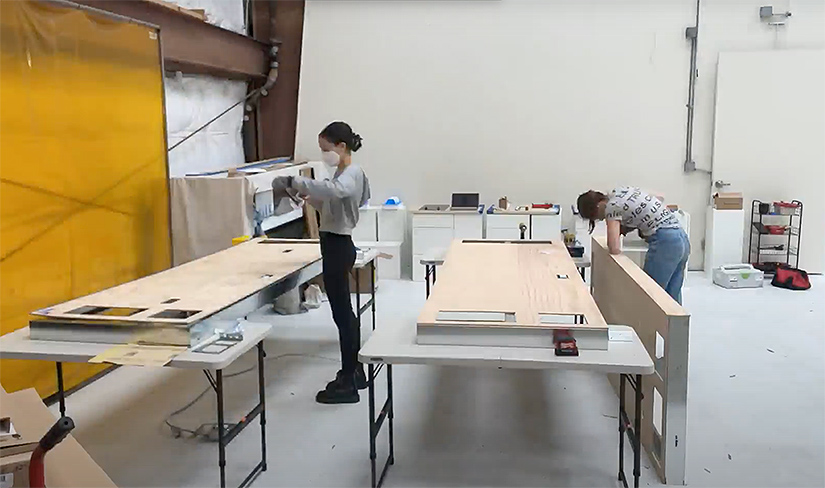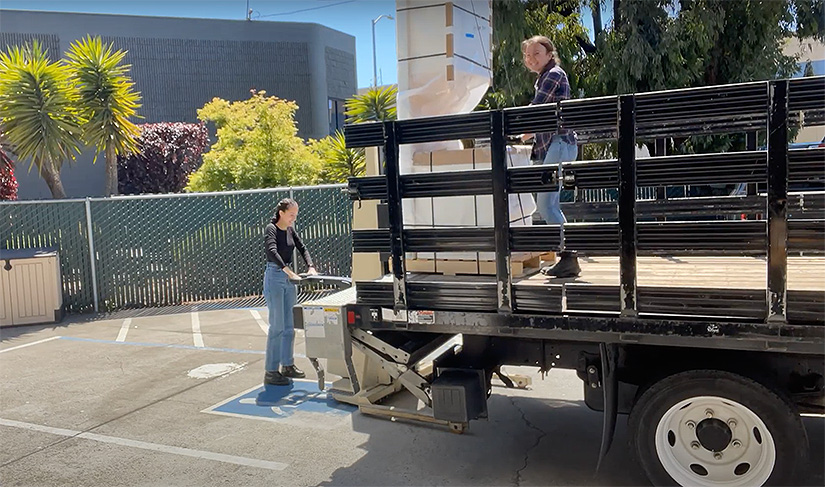IN² Demonstration: The Possibilities of a Plug-and-Play Kitchen

For its latest National Renewable Energy Laboratory (NREL)-based cohort, the Wells Fargo Innovation Incubator (IN2) formed an all-demonstration group, where each participant would create a demonstration of their technologies as part of the program.
The IN2 startups will complete their demonstrations over the next several years, helping them in their goal to see their technologies reach the market. Providing a real-world example of each startup’s technology helps bring in new customers and partners after presenting a visual example of success.
Among the first to have its demonstration project underway is San Francisco-based Kit Switch, which is working with Habitat for Humanity and deploying pilots in both San Francisco and Los Angeles.
“We create the building blocks to form apartments inside existing structures, starting with plug-and-play kitchens,” said Armelle Coutant, co-Founder and CEO of Kit Switch. “In terms of creating more circular and sustainable cities, reusing existing structures is a less carbon-intensive way to create infill housing. Our minimodules are designed for flexible layouts and reconfigurability, enabling spaces to stand the test of time and adapt to changing uses.”
An all-women-led team that met at Stanford University, Kit Switch creates tools to turn empty hotels, garages, and other underutilized spaces into more permanent and affordable housing options through the addition of kitchens. The Kitchen Kit includes a back wall panel that hosts preinstalled electricity and plumbing, simplifying the installation.
“With traditionally built kitchens, if something breaks, you need to go to different suppliers. But here, Kit Switch is one point of contact, and they can take care of it,” said Naveen Kumar Muthumanickam, NREL research engineer for Industrialized and Robotic Construction Innovation.
Muthumanickam is the principal investigator for Kit Switch’s IN2 project. He first got involved when he read through their proposal and found it impressive. He said Kit Switch can give new life to the hundreds of thousands of vacant commercial buildings in the United States.
“They start out with a small piece of the apartment design puzzle—the kitchen. With their product design and process innovations, Kit Switch is hoping to get kitchen modules installed and up and running in a day’s time. We are helping them achieve that goal in scale and speed,” he said. “I help them by creating a software framework that can generate design iterations, keep track of design changes, and optimize their off-site production, shipping, and on-site assembly processes.”

According to Muthumanickam, a holistic software framework can help Kit Switch:
- Reduce the cost of production
- Reduce the time of production
- Maintain performance on modules that limits the carbon footprint.
Kit Switch creates a kitchen layout by pulling from a library of standard building blocks, allowing them to work with customers to provide the right package to suit their needs. To promote local partnerships, Kit Switch works with contract manufacturers instead of owning its own facility. An effective software system helps them create specific models and specifications they can send to those manufacturers.
“Kit Switch isn’t reinventing cabinetry. Our value is providing an all-inclusive kit, from framing to fixtures, thoughtfully engineered for ease of installation,” Coutant said. “Instead of spending weeks building a new kitchen, our products arrive on-site ready to connect to the building plumbing and electrical supply through a plug-and-play access panel.”
During the IN2 program, Kit Switch’s goal is to test its installation process, taking a module from the factory all the way to having someone live in a unit using a Kit Switch kitchen. Each time they complete a step—from construction, to shipping, to installation, to inspection, to use—they go back and restart the process. This allows them to refine it each time and improve the process as a whole.
“We decided to do a phased approach where we’ve done these small cycles with our team and the team at NREL,” Coutant said. “The final demonstration will be when we do everything in one go with our partner, Habitat for Humanity.”
One area of testing has focused on how to ship the modules to the site of the installation. One method has them ship a finished module, and another allows them to ship it in separate pieces and assemble it on-site.
“If you can flat-pack these, if they are able to crack that, it would be a game changer in terms of logistics,” Muthumanickam said.

He remains excited by the possibilities Kit Switch can unlock. His team works with many modular factories, but Muthumanickam believes Kit Switch has a leg up on others in the space.
“It’s a smart strategy to just start with kitchens. When you handle one problem at a time, you can use what you learned on new projects,” he said. “If Kit Switch tried everything at once, they might have failed. But they know if you start small, break the barriers in this, then they can extrapolate this and go to other parts of a home and a larger scale.”
By the end of the project, Kit Switch expects to have at least four finished kitchens: one in San Francisco, another in a garage in Los Angeles, one they can showcase at conferences and other expos, and one to onboard and train new manufacturers, architects, and contractors. If possible, they will also create an additional two before their time with IN2 draws to a close.
“Being recognized as a part of the IN2 program has been incredibly validating for the mission and impact we are working towards. It was a really special moment,” Coutant said. “Our partners at NREL are part of our team, rooting for us and excited when things go well. We have already achieved so many important milestones together. We just want to keep going and make the most of this opportunity.”
Get more information on the IN2 program.
IN2 Demonstration Series:
Last Updated May 28, 2025
